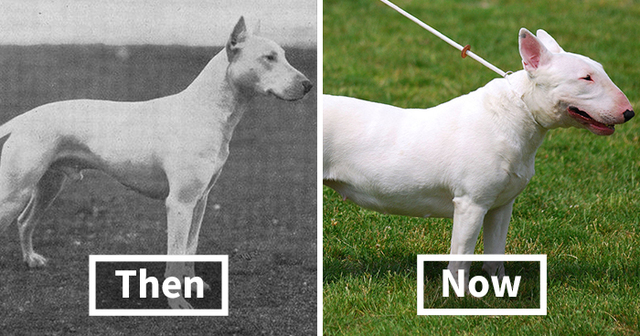Jaguar v Leopard what are the differences between a jaguar and a leopard
We recently wrote about cheetah vs leopard, and recently have had some readers asking about jaguar v leopard, and even whether they’re the same animal.
It’s easy to understand why people get jaguars and leopards confused, as they look very similar. Both animals are muscular big cats with spotted coats that ambush their prey.
At first glance it’s understandable to mistake a jaguar for a leopard – or vice versa – but there are some tell-tale signs as to whether a big cat is a leopard or a jaguar. Some of the differences between jaguar and leopard are simply in the physical appearance of the cat, and others are to do with behaviour and natural range.
Before we look at jaguar vs leopard differences, it’s worth understanding the similarities between these two beautiful predators:
Both are members of the Panthera genus, making them the only true big cats alongside the lion and tiger. Interesting fact – these four cats are the only animals capable or roaring!
Both leopards and jaguars are expert predators who fiercely defend their territory and live a solitary existence. If you see more than one jaguar or leopard together they will be a mating pair or mother with cubs.
Sadly, both jaguars and leopards are endangered species, with significant population declines in recent decades. Leopards are considered vulnerable on the IUCN red list while jaguars are near threatened.
So what are the differences between leopard and jaguar? Below we split these differences into three categories – range & habitat, physical difference, and behavioural differences. Read on understand exactly how different leopards and jaguars are!
Range & habitat
In the wild, jaguars and leopards never meet as they inhabit totally different continents.
Leopards are native to Africa, parts of the Middle East, and in Asia from Sri Lanka up through India to China. The vast majority of the wild leopard population lives in East and Southern Africa.
Wild jaguars live only in South and Central America, with most of the population residing in the Amazon.
Both cats are adaptive hunters, able to survive in many different habitats. Until the 21 st century, both cats had far larger ranges, with jaguars living in the mountains and deserts of the southern USA and leopards found in Europe, Japan, and Russian snow forests.
Today Africa’s leopards are predominantly savanna animals, living in areas with a mix of grasslands and trees. Jaguars tend to be found only in areas of deep rainforest.
Jaguar vs leopard physical differences
Size
Jaguar and leopard are similar heights, with jaguar just a couple of centimeters taller at the shoulder.
As well as being slightly larger, jaguar are significantly bulkier cats than leopard, with males weighing up to 120 kg compared to the 80 kg male leopard. Jaguar are the largest cats in the range, whilst leopards are the smallest big cats in their habitats (behind lions and tigers).
Female jaguars are usually around 10% lighter than males, while for leopards females can be up to 30% lighter than the males.
Head size and shape
The size and shape of the head are different enough between the two cats to allow you to tell the difference by sight.
Leopards have relatively small, angular heads featuring sharp cheekbones and clearly defined lines. By comparison, jaguars have larger heads and rounder faces, with less prominent ears.
Due to the types of prey they hunt and the method of killing each species prefers, the jaguar has a much broader forehead and wider jaw. In fact, the jaguar’s huge jaw muscles and teeth give it the strongest bite force of any mammal, allowing it to pierce the armour of caiman and tortoises.

Jaguar (left) has a larger and more rounded head than a leopard
Body shape and length
Body shape one of the most defining differences between a jaguar and a leopard.
Jaguars are stocky animals, with broad shoulder muscles and short, compact bodies. Their abdomens are barrel-like, making them look as if they are well fed, or even pregnant.
Leopards have longer, slender bodies with a build that’s more slight than a jaguar. This slender figure plus their longer tail makes the leopard a more agile animal, better at climbing and more adept when running at speed.

The jaguar (left) is heavier and stockier than the leopard
Tail length
Tail length is another physical factor that differentiates leopards from jaguars.
Leopards are more arboreal than jaguars and have long feline tails to aid their balance when in trees. Jaguars have much shorter tails to match their stockier build.

Notice how much longer the leopards’ (right) tail is than the jaguars’.
Markings
At first glance leopards and jaguars both have a similar beautiful rosette pattern across their fur – jagged clusters of black circles resembling roses, with tawny centers on a tawny coat.
Look more closely and you’ll notice that these rosettes are slightly different. Leopard rosettes are smaller, less complex, and are grouped closer together. Jaguar rosettes are larger, and in the center of each rosette, there’s one of more small black spots.

Note the spots inside the jaguar’s rosettes (left)
Both jaguars and leopards can have black rosettes on golden fur, or in some rare cases, the fur can be (almost) completely black.
So what’s a black panther – leopard or jaguar?
In both species there are cases of black-furred animals, and, rather confusingly, black panthers can be either a leopard or a jaguar.
This unusual colouring comes from a gene mutation called melanism, producing a surplus pigment called melanin that causes the fur to turn black. Some scientist believe that the black colour is an evolutionary advantage, providing better camouflage when hunting in very low light
If you look closely at any black panther you’ll see a rosette pattern is still visible but obscured by black pigmentation where the tawny colour should be.
Because melanism is genetic, one of the parents must be a black panther for a cub to be a black panther.

A black panther close up and in profile
Jaguar v leopard behavioural differences Diet
Leopards are the cat with the most varied diet, and eat pretty much any animal they come across – from antelope and gazelle to birds, lizards, fish… and even dung beetles! Unlike the jaguar, the leopard is not actually an apex predator, and are sometimes attacked by lions.
Jaguars are also varied eaters but don’t have such a broad diet as a leopard. Their diet leans predominantly towards reptiles including turtles and tortoises, caimans, and snakes.
Killing technique
Both jaguars and leopards prefer to hunt by stalking and ambushing their pretty rather than long chases.
Leopards usually kill their prey using a suffocating bite around the throat or mouth. Jaguars prefer to kill either by using their canine teeth to pierce their prey’s skull or by severing the spinal column with a powerful bite at the back of the neck.


A jaguar bites back of a caiman’s head vs a leopard taking an antelope by the throat.
Love of water
Both cats are good swimmers, but leopards are not fond of water and will avoid it when they can.
Jaguars on the other hand – much like tigers – thrive in and around water, regularly hunting caiman and anacondas, and even diving for large fish.
Tree climbing skills
Both cats are able to climb trees, though jaguars are not as agile in trees as leopards.
Leopards generally hoist their kill into a tree to keep it safe from larger predators live lion and hyena. They also spend time relaxing and sleeping in trees, so are extremely skilled climbers.
Jaguars are the apex predator in their environment and don’t have any need to hide prey or stay safe by climbing trees, so spend most of their time on solid ground.
Age of independence
Jaguars have been observed in the wild to gain independence from their mother at a younger age than leopards.
Female jaguars leave their mother at around 14-15 months and male jaguars around 18-20 months vs male and female leopards leaving their mothers’ around 18-24 months old.
Leopard vs jaguar fight – which would win?
OK, so a purely hypothetical question – which would win a fight between a leopard and a jaguar?
Both leopards and jaguars are fast runners, can climb trees and swim, so it could be an all-terrain fight!
As we’ve discussed, jaguars are heavier and stronger than leopards. Jaguars also have the strongest bite of any of the big cats – able to crush a bone with just one bite. These facts would probably give the jaguar an edge in any fight between the two predators, making jaguars the winners!
And that’s the lot for this round-up of jaguar v leopard. What do you think – any difference between jaguars and leopards that surprise you? Or any differences we should add to this post? Let us know in the comments section below!




